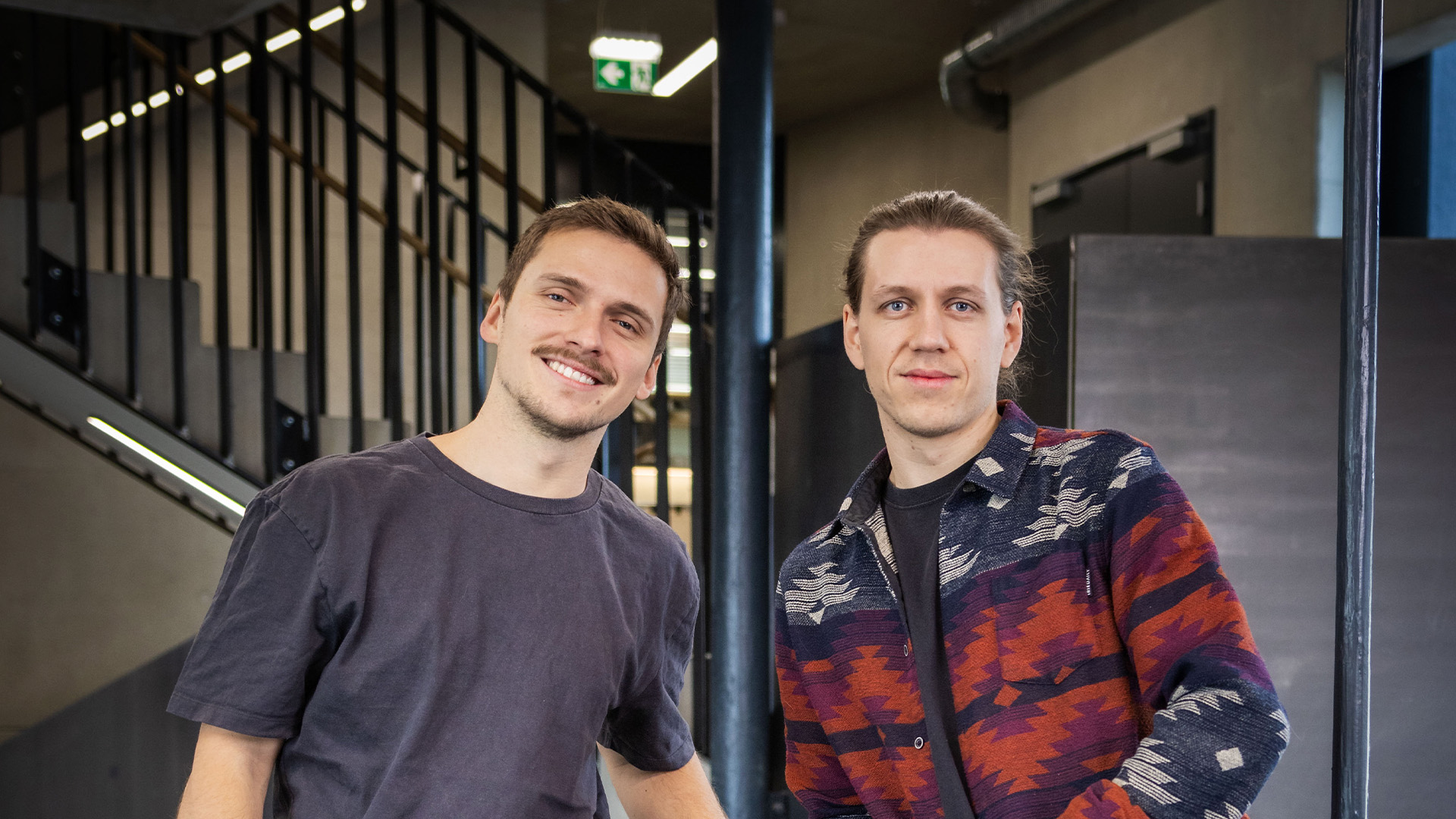Fear of failure is one of several indicators GEM uses to gauge a society’s entrepreneurial potential. While starting a business has become more accessible in many countries, an increasing number of aspiring entrepreneurs are held back by the perceived risks. Aspiring entrepreneurs can’t view setbacks as doom-and-gloom failures, but as part of the learning process. Austrian entrepreneur Moritz Lumetsberger (pictured on the left in the photo above) captures this perspective well: “Startups are just constant experiments.”
As CEO and co-founder of rendersnek, a Graz-based creative studio specialising in eye-catching 3D animations and ads, Lumetsberger adds: “Fear of failure is real, but it’s also fuel. You learn by doing – and messing up.”
That trial-and-error mindset shaped the early days of rendersnek, a venture he co-founded with Tim Haderer (pictured on the right in the photo above). What began as a curiosity-fueled exploration of architectural and product visualisations evolved into a full-fledged business working with top brands like Coca-Cola, dm, Volvo, and RedBull. Key was the constant testing, tinkering, and social media activity. Their breakout moment was a client campaign that racked up 2.4 million views online.
Those early wins were backed by a culture of experimentation that Lumetsberger credits to his time at FH Joanneum, one of Austria’s leading universities of applied sciences. There, he pursued the Digital Entrepreneurship Masters, an international degree programme where students are encouraged to incubate their own ideas, bolstered by a foundation of academic excellence.
“Our studies emphasised learning by doing. We worked in diverse teams, tackled hands-on projects, and had access to mentors who had started real companies. That gave us the confidence to take risks and to recover from mistakes.”
And there were mistakes. From hiring missteps to overestimating timelines, the journey hasn’t always been smooth.
“The ones that sting the most are the ones that teach you the most,” Lumetsberger says. “That’s what education should be about: giving students space to try, fail, and grow.”
That ethos also underpins rendersnek’s second venture: FOOH.com, a curated platform showcasing the best commercial work in the emerging FOOH (Fake Out-of Home) advertising space. The fact that Lumetsberger and his team were able to bootstrap this second company themselves without outside investors marks a significant milestone.
“That was a moment of real validation,” he says. “It proved we’re building something sustainable. I want both of our companies to be places where people love to work. I want to keep learning, keep building, and surround myself with other curious creators and entrepreneurs.”
His advice for universities looking to nurture future founders is to give students real-world challenges, connect them to the startup ecosystem, and expose them to entrepreneurs who’ve walked the path, stumbles and all. After all, embracing failure isn’t just part of entrepreneurship, it’s the entry point.
Concluded Lumetsberger: “You don’t build a company by avoiding mistakes. You build it by making them – and learning fast.”
This mindset, exemplified by Lumetsberger and many other successful entrepreneurs, highlights the importance of building strong support systems that reduce the fear of failure and instill confidence. From financial assistance and accessible training to mentorship programs and simplified regulations, entrepreneurial ecosystem actors play a critical role in enabling more people to view failure as stepping stones to success – and take the leap to start a business!

